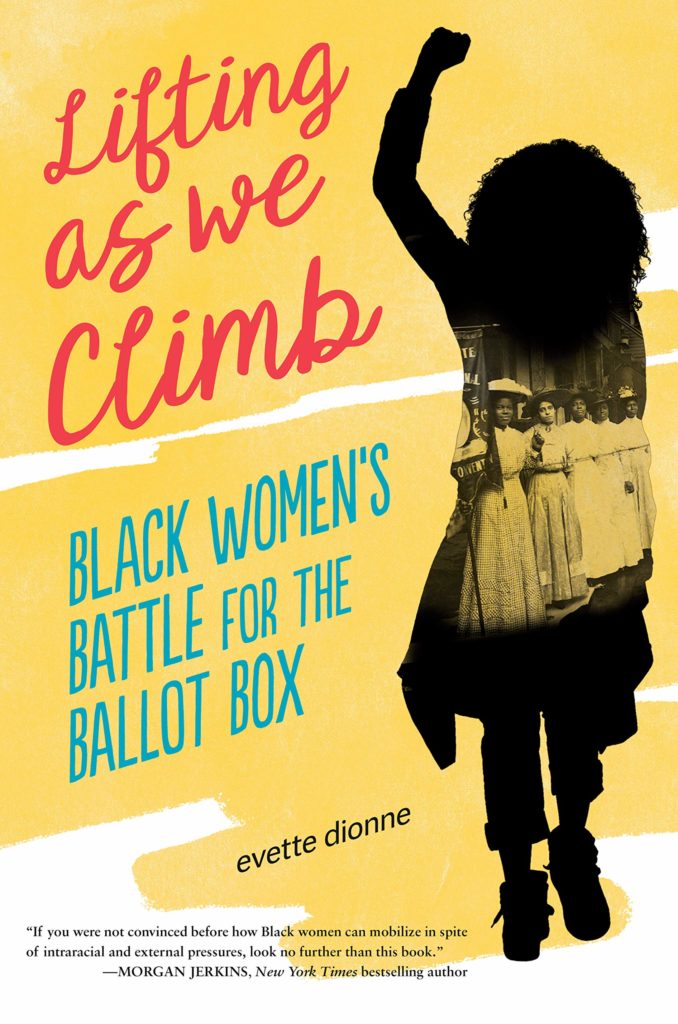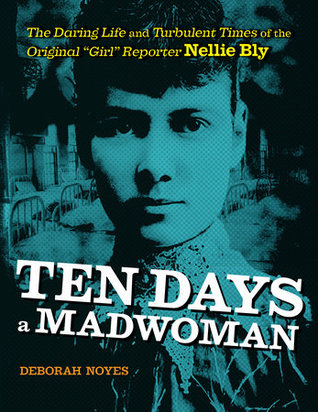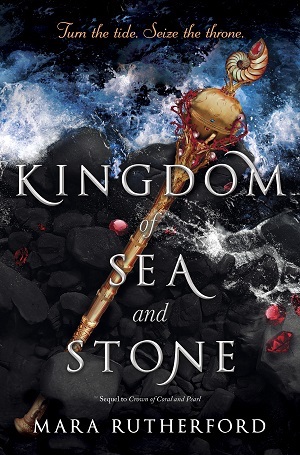Sponsored by Kingdom of Sea and Stone by Mara Rutherford, published by Inkyard Press
Ever since Nor was forced to go to a nearby kingdom in her sister’s place, she’s wanted nothing more than to return to the place and people she loves. But when her wish comes true, she soon finds herself cast out from both worlds, with a war on the horizon.
As an old enemy resurfaces more powerful than ever, Nor will have to keep the kingdom from falling apart. There are forces within the world more mysterious than Nor ever guessed—can she stay alive long enough to conquer them?
Hey YA Readers!
Welcome to November, a month for celebrating all things nonfiction. In the Monday newsletters this month, I’m going to highlight some of the best in YA nonfiction and today kicks off with the why of it.
Once again, Goodreads has put forth their annual Goodreads Choice Awards without a category for nonfiction for young readers. It’s something they do annually, and it always feels like such a slight for a giant category of powerful books that deserve their time in the spotlight. The following piece is adapted from a post I wrote about needing to highlight incredible nonfiction for young readers back in 2016, and it still stands true in 2020.
Note that something a little bit tricky about nonfiction for young readers is often the age range doesn’t align neatly with traditional middle grade and YA categorization. It’s not uncommon to see books for ages 10 and up, as opposed to more traditional 8-12 or 12 and up. This isn’t true for all nonfiction for young readers, but worth keeping in mind through the month and in your explorations of nonfiction.
Where’s The Love for Nonfiction for Young Readers?
Perusing the lists for this year’s Goodreads Choice nominees, categories aren’t entirely surprising. There’s YA fiction, YA science fiction and fantasy, poetry, debut novels (which cover both adult and young adult categories), romance, autobiography, and more. But missing from the lists?
Nonfiction for young readers.
Is it that no one is reading these books? Or is it that we’re not talking about them in such a way that makes them stand out as the kinds of books worth reading for pleasure? Is it because these books aren’t marketed toward adult readers in the same way that many YA books are?
As our canon of young readers literature grows and the books become better and better, it’s worth pausing to take a look at what it is we’re really talking about with YA lit. YA encompasses both fiction and nonfiction, genre and non-genre, and all of those aspects of YA help make it the rich, wide collection that it is.
A quick perusal of any bookstore’s YA section showcases at least a stack of nonfiction titles. If you haven’t paid attention lately, perhaps now is the time to pause — maybe you’d be surprised to know that the nonfiction arena of YA contains the most obvious and celebrated diversity so far. There are memoirs by young people of color, gripping adventure stories by people of all abilities and backgrounds, and collective works that introduce readers to a wide array of science, historical, and cultural topics that, though available in adult nonfiction, are written to and for young readers in thoughtful, encouraging, engaging, and exciting ways. These books do not dumb down any topics but instead engage young readers in ways that appeal specifically to them.
 |
Just this year alone, nonfiction in YA has tackled topics like anti-racism, Black voting rights, being an immigrant from Korea, Charles Lindbergh, a visual history of protest, Gloria Steinem, queer consciousness, and so much more. These are highly appealing titles for young readers . . . as well as those of us who enjoy good books, period.
One thing I didn’t anticipate as I began writing more about nonfiction was the response I’d get from parents, teachers, librarians, and others who work with younger readers. They’ve thanked me — these are the kinds of books their kids love, but they’re also the kinds of books that are hard to find and hard to make sense of because they don’t get the same kind of attention in the book world as fiction does.
 |
So let me issue a challenge to readers of middle grade and YA: pick up a nonfiction title or two. Enjoy the way those books are packaged and thoughtfully constructed. Examine how creative the narrative threads are or the ways the author selected their focus on a topic. Challenge yourself to find bias in those titles and whether or not the argument is well defended throughout the story. Pick up an interesting fact or two that you can carry with you always — for me, that would be Nellie Bly’s pet monkey (she picked that up in her round-the-world trip) and how that pet monkey destroyed her dishes upon her return home from her biography Ten Days a Madwoman.
Then share those books. Share them with other readers, young or not-so-young, and then keep exploring. For those who write about books, create more book lists or discussions that include nonfiction. Spread the word about these books as much as you do fiction; in many cases, they’re as gripping narratively as the latest suspense title. While we have to work harder now to find these books, that work is rewarding because of the treasures that exist in nonfiction.
The selection of nonfiction for young readers is a deep pool that keeps getting better and better.
Keep your eyes here throughout the month for excellent YA nonfiction recommendations and themed lists to help you wade even further into this exciting category of books.
Thanks for hanging out, and we’ll see you Thursday!
— Kelly Jensen, @heykellyjensen on Instagram and editor of Body Talk, (Don’t) Call Me Crazy, and Here We Are.
